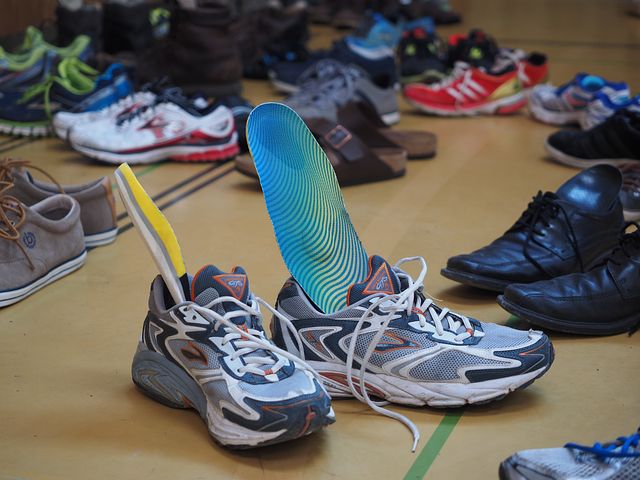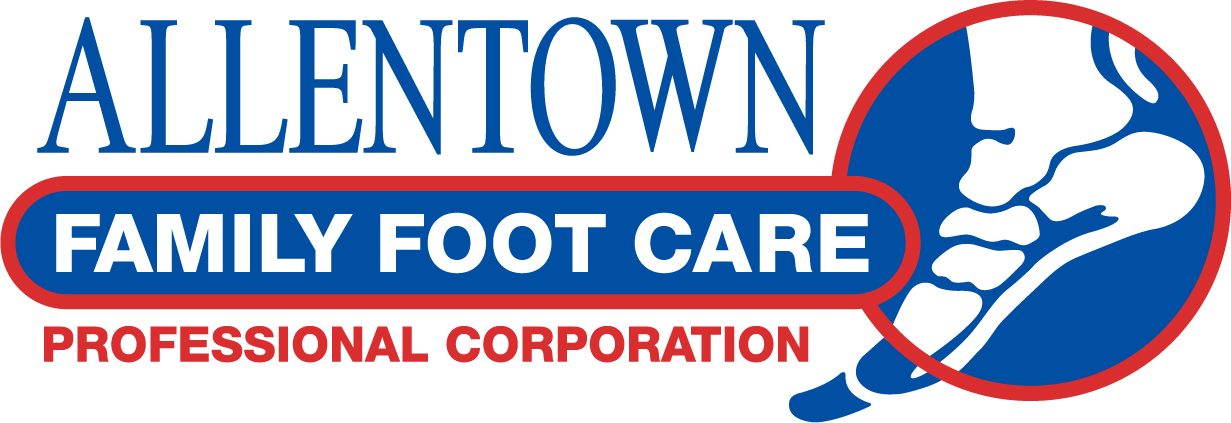Warts are small growths on the skin that are caused by a viral infection and are very commonly caused by the Papovavirus. Sometimes Warts can be painful or embarrassing based upon their size and location. A Plantar Wart can be found as a single lesion or as a cluster that is grouped together and referred to as a mosaic Wart. Sometimes there is a larger wart with surrounding smaller isolated Warts and these are the so-called ‘mother-daughter’ Warts. They are difficult to treat because it is a viral infection that lives within the layers of your skin. Warts can also occur on the sides and top of the foot but are not classified as “Plantar Warts”.
A case of mistaken identity is also possible with a Plantar Wart. Corns and Callouses found on the bottom of the foot can be similar in appearance. They also cause significant discomfort. The Corn is a discrete localized core of hard thick skin caused by increased pressure at a particular point. For example, a deep-seated Corn may be located under a metatarsal head, which is subjected to increased pressure. A Callous is a thickening of skin over a larger area such as the ball of the foot. These Corns and Callouses are a result of the skin’s protective mechanism in response to pressure. A Plantar Wart often has a Callous covering making distinction between a Callous or Wart more difficult for a patient. Proper diagnosis is important because treatment for Corns, Callouses and Plantar Wart differs. If neglected, all of these conditions can cause severely painful ambulation.
Are Plantar Warts common?
Plantar Warts are seen in all age groups, but they are most common between the ages of 12 and 16. Nearly everyone has experienced a Wart during childhood or remembers a family member who had one. Most individuals do not seek treatment initially. A typical history is a patient who recalls having a single Wart a few months ago and at the time of treatment the Wart has increased in size and number. If the nasty appearance of a Wart does not motivate one to seek treatment, pain will help in the persuasion. In the case of the Plantar Warts, the pain may be excruciating. Many patients describe a sensation or feeling of walking on a pebble.
Are Plantar Warts contagious?
The answer is yes, under certain circumstances, Plantar Warts are contagious. First, the virus must come in contact with the skin. The virus can be introduced through a break or crack in the skin. Also, an individual must be susceptible to the virus, lacking immunity against it. It is possible to come into contact with a Wart virus in a locker room or swimming pool environment. Siblings could conceivably pass the virus to one another if the above circumstances take place. Since the incubation period for Warts is from 1 to 20 months, it is difficult to tell exactly when the virus is introduced into the body.

The foot is especially vulnerable to irritation and injury either from footwear or contact with the ground. A small break or crack in the skin will allow the virus virus to be introduced. The weight bearing points of the feet are most vulnerable and that is where the Plantar Wart finds a home. The most common areas for the Plantar Wart are the ball of the foot (metatarsal heads), the heel and the Plantar aspect of the toes. The skin in these areas is subjected to the most weight, pressure and irritation, making a small break or crack more likely. Faulty mechanics or abnormal structure can place even more stress on a given area. Even a high-heeled shoe can play a role by placing more weight on the metatarsal heads.

Are Plantar Warts Treatable?
Most patients will try over the counter home remedies for Plantar Warts before consulting medical care. Some Warts will easily respond to over the counter therapy, while others are more resistant. There are many treatments for Warts ranging from at home treatment with duct tape to medical treatments using liquid nitrogen. Warts can also be surgically removed if they are persistent, painful and not responding to topical treatments. Laser Wart removal is also an effective treatment for persistent Warts as the laser is used to destroy the Wart and prevent the return of new Warts. Plantar Warts tend to be more resistant because the skin on the bottom of the foot is thicker than elsewhere on the body. This makes it difficult for topical OTC products to penetrate the skin and become effective. Warts do not have a” root” or “core” that can be dug out and are “only skin deep.” They do not go any deeper than the deepest layer of skin.
There is no one superior treatment for Plantar Warts. Even medical grade treatments such as liquid nitrogen (beetle juice) and surgical excision carry a risk of recurrence. The fact is that there is no one reliable way of eliminating all Warts. Plantar Warts may be very resistant at times, requiring treatment over several months to be eliminated. Treatment ranges from chemotherapeutic techniques to surgery. Even psychotherapy has been cited in literature. The best form of treatment is the least aggressive. This especially is true when dealing with children or patients who have diabetes or peripheral vascular disease.
The number of treatments varies from patient to patient. A conservative approach to the Plantar Wart is application of a topical agent such as salicylic acid or monochloroacetic acid. There are many other agents that can be utilized. Liquid nitrogen application is another popular form of treatment. Usually the Wart and surrounding tissue is pared down so the Wart tissue is better exposed. A protective aperture pad should be applied to protect the surrounding skin from the agent, which is applied next. The pads are also used to decrease pressure from the affected wart area. This aids in decreasing the pain when bearing weight and the patient is made more comfortable. Average treatments range from one to three visits.
Surgery is sometimes offered to patients with resistant, painful Plantar Warts. Excision is generally not recommended since painful scarring can occur. A painful scar on the sole of the foot can pose an even more severe problem. If care is taken, Warts may be scooped out with the use of a curette. This can be performed quite safely without the risk of scarring. Again, this more aggressive surgical treatment is reserved for painful Plantar Warts, which are resistant to more conservative methods.
Early diagnosis and treatment of a Plantar Wart is helpful in achieving the desired success and elimination of the problem. If you have persistent Plantar Warts, it is recommended to see Team AFFC to discuss a treatment option that is right for you. Early treatment before pain becomes severe is advisable!
